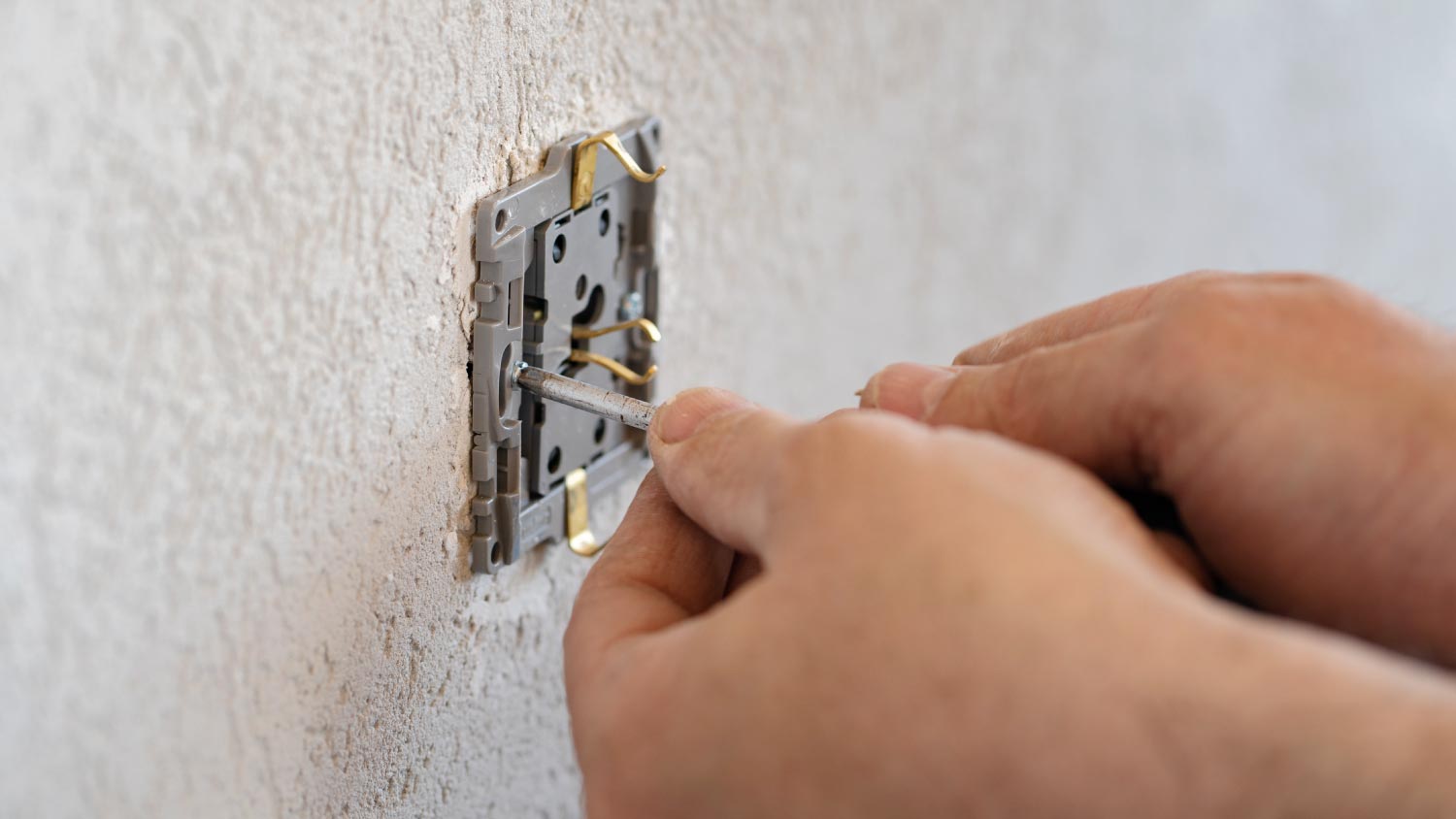The humble electrical outlet: every room has them. Sometimes it’s just a crooked plate, but if your outlet feels hot to the touch or you’ve noticed sparks when you plug in an appliance, it’s time for a new one. After you test the wires behind the outlet plate for power flow, you’ll need to trim and strip the wire ends that are damaged, rewire them to the new outlet, and replace the wall plate.
4. Install a Ceiling Fan
If the room already has an existing light fixture and you’ve got a bit of DIY experience under your belt, you can most likely tackle a ceiling fan installation. You’ll need to ensure that the mounting bracket for the fan can support its weight. You may also want to have an assistant on standby to help you manipulate the fan and blades.
If you don’t have any experience working with electrical wires and there’s no existing wiring at the installation point, you might consider hiring a pro to handle the job.
5. Rewire a Lamp
Your favorite lamp will give out at some point. But with a little patience and about 45 minutes, you can wire new life into an old lamp. You can buy a lamp kit, or individual parts, to rewire a lamp. Make sure the lamp is unplugged before working on it. Carefully remove the lampshade, bulb, harp, and protective base. Loosen the socket and pull the wire out of the lamp. Once the socket is removed, guide the new wire through the lamp’s base. Attach the wires to the socket, reassemble, and test out your work.
6. Reset a Tripped Breaker
Often, breakers can trip when there’s too many appliances plugged in at once. Other reasons why circuit breakers trip can include ground fault surges and short circuits. Don’t stay in the dark; find your circuit breaker box, usually a gray metal box attached to a wall. Open the door, and look for the switch in the “off” position. Move the switch back to the “on” position. If the switch is in the middle position, move it to the “off” position and then flip it to the “on” position. Test an appliance to see if this worked to reset the circuit breaker.
7. Repair the End of an Extension Cord
Extension cords come handy all over the house, whether you’re powering holiday lights or a fan to cool off guests during an outdoor summer party. If an extension cord stops working, repair it instead of throwing it away. Cut off the old plug and cut back the insulation. Strip the wires and twist them tightly. Screw them into the back of the plug. Match up the wires to the appropriate terminal screw:
The green wire goes to the green screw.
The black wire goes to the brass, or gold, screw.
The white wire goes to the silver screw.
Reassemble the plug and tighten the screws holding it. Plug in the three-prong receptacle to test out your DIY work.












